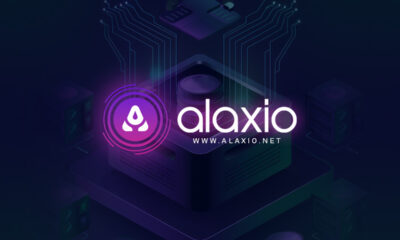Education
Unlocking Opportunities: How to Secure Coursera Financial Aid for Your Online Learning Journey

In today’s world, education is more important than ever, but not everyone has the same access to it. Coursera’s financial aid program is designed to help bridge this gap, making quality online learning available to those who might not be able to afford it. This article will walk you through the ins and outs of securing Coursera financial aid, highlighting its benefits and impact on learners from all walks of life.
Key Takeaways
- Coursera financial aid opens doors for learners who face financial barriers.
- The application process is straightforward, focusing on your need and commitment.
- Aid recipients can access the same course materials as paying students, ensuring equality in learning.
- Financial aid has led to numerous success stories, showcasing its transformative power.
- The future of financial aid on platforms like Coursera is likely to become more personalized and tech-driven.
Bridging The Educational Divide
Understanding The Role Of Financial Aid
Financial aid is super important because it helps people who might not otherwise be able to afford education get access to it. It’s not just about the money; it’s about leveling the playing field. Financial aid acknowledges that education can change lives. Coursera’s model shows that financial aid isn’t just for individual growth, but also helps build a more knowledgeable and fair society. It shows that education should be a right, not a privilege, and that with the right help, anyone can make a difference.
Impact On Underprivileged Learners
Financial aid can really change things for students who don’t have a lot of money. It lets them take courses and get certifications they couldn’t otherwise afford. This can lead to better job opportunities and a chance to improve their lives. For example, someone might use online learning platforms to get skills that help them get a better job. It’s about giving everyone a fair shot, no matter where they come from.
Creating Equal Opportunities
Financial aid is key to making sure everyone has a fair shot at education. It helps break down the barriers that keep people from low-income backgrounds from getting the skills they need to succeed. By giving financial support, programs like Coursera’s help create a more diverse and skilled workforce. This not only helps the people getting the aid but also benefits society as a whole by bringing AI is revolutionizing education and innovative ideas to the table.
The Genesis Of Financial Aid In Online Learning
Historical Context
Back in the day, getting a good education was often something only richer families could really swing. But then came online learning, and things started to shift. It wasn’t just about putting courses online; it was about figuring out how to make them accessible to everyone, regardless of their bank account. This is where the idea of aid in online learning started to take shape. It was a slow burn at first, but the need was definitely there.
Evolution Of Financial Aid Models
At first, financial aid in the online world was pretty basic. Think simple scholarships or discounts. But as online learning grew, so did the ways to help people pay for it. We saw things like partnerships with companies, crowdfunding options, and even income-sharing agreements where you only paid if you got a job after finishing the course. It’s been cool to see how creative people have gotten to break down those financial barriers. These models are constantly evolving to meet the needs of a diverse student population.
Current Trends In Financial Aid
These days, financial aid is getting even more interesting. There’s a big push for personalized aid packages that consider each student’s unique situation. Plus, technology is playing a bigger role, with AI helping to match students with the right aid opportunities. The goal is to make the whole process smoother and more effective. And with more and more people turning to online education, expect these trends to keep evolving. It’s all about opening doors to global opportunities and making education accessible for all.
How Coursera Financial Aid Works
Eligibility Criteria For Applicants
So, you’re thinking about applying for Coursera financial aid? Cool! First things first, you gotta see if you even qualify. It’s not just a free-for-all. Coursera’s looking for folks who genuinely need the help. Basically, they want to know you can’t afford the course fee.
What do they look at? Well, things like your income, employment status, and overall financial situation. You’ll have to fill out an application detailing all that. But it’s not just about proving you’re broke. You also need to explain why you want to take the course and how it’ll help you achieve your goals. They want to see you’re serious about learning and that the course will actually make a difference in your life. Think of it as convincing them you’re a worthy investment.
Application Review Process
Alright, you’ve submitted your application. Now what? Time to play the waiting game. Coursera actually reviews each application, which is pretty cool. It’s not just some automated system spitting out approvals or rejections. Real people are looking at your story.
They’re checking to make sure you meet the eligibility criteria, of course. But they’re also looking at the quality of your answers. Did you put some thought into it? Did you explain your situation clearly and convincingly? Did you show genuine enthusiasm for the course? All that matters. The review process is there to make sure the aid goes to those who really need it and are most likely to benefit. It’s about fairness and making the most of limited resources.
Aid Distribution And Course Access
Okay, the good news: you got approved! Now what happens? Well, you get access to the course, for free! It’s like you paid full price, except you didn’t. You get all the lectures, readings, quizzes, everything.
But here’s the thing: you’re expected to actually do the course. Coursera wants you to finish it within a certain timeframe. They’re not just handing out freebies; they’re investing in your education, and they expect you to take it seriously. Think of it as a responsibility. You got this awesome opportunity, so make the most of it. And after you finish, they might ask for feedback. This helps them improve the whole financial aid thing for future learners. It’s a win-win. Coursera’s financial aid model is designed to help people learn and grow, regardless of their financial situation.
The Impact Of Financial Aid On Learners
Increased Access To Education
Financial aid is a game-changer. It tears down walls that keep people from getting an education. Think about it: so many folks want to learn, but they just can’t afford it. Financial aid steps in and makes it possible. It’s not just about money; it’s about opening doors. A course on Coursera, for example, saw a 20% jump in sign-ups after they started offering aid. That’s a lot of people getting a chance they wouldn’t have had otherwise.
Diversity In Learning Environments
Financial aid doesn’t just help individuals; it makes learning better for everyone. When more people from different backgrounds can join courses, you get all sorts of new ideas and perspectives. It makes discussions richer and helps people understand the world in new ways. It’s like adding different spices to a dish – it just makes everything more interesting. Plus, it helps break down stereotypes and builds bridges between cultures. It’s a win-win.
Success Stories Of Financial Aid Recipients
Okay, so here’s where it gets really cool. Financial aid isn’t just numbers and stats; it’s about real people changing their lives. I heard about a single mom who used Coursera financial aid to get a certificate in project management. She landed a job that doubled her income. Then there was this guy from a small town who took an online course in coding. Now he’s working as a software developer. These stories show that financial aid’s impact goes way beyond just getting a piece of paper. It’s about building a better future. People who get aid are also more likely to finish their courses. It’s like they know they’ve been given a chance, and they’re not going to waste it. They’re motivated and determined to make the most of it. It’s really inspiring to see. It helps with career advancement and opens doors to new opportunities. The long-term impact is huge, not just for the individual, but for their families and communities too.
Collaborations That Expand Opportunities
Partnerships With Educational Institutions
Coursera doesn’t operate in a vacuum. A big part of its success in offering financial aid comes from teaming up with other educational institutions. Think about it: universities, colleges, and even vocational schools can extend their reach by offering courses on Coursera. This is especially helpful for students who might not be able to afford traditional tuition or relocate for studies. These partnerships allow institutions to offer financial aid options to a wider audience, making education more accessible than ever before. It’s a win-win situation: the institutions expand their reach, and more students get access to quality education.
Corporate Sponsorships
It’s not just schools getting involved; companies are too! Corporate sponsorships play a huge role in expanding opportunities through Coursera. Companies often sponsor courses or even entire learning programs that align with their industry needs. This means they’re essentially investing in the future workforce by helping people gain the skills they need. For example, a tech company might sponsor a data science course, providing financial aid to students who want to learn those skills. This helps the company build a pipeline of qualified candidates, while also giving individuals a chance to transformative impact of financial aid. It’s a smart move for everyone involved.
Community Engagement Initiatives
Beyond schools and companies, community engagement initiatives are also key. Local organizations, non-profits, and even government agencies can partner with Coursera to offer financial aid to specific groups within their communities. This could include programs for unemployed workers, veterans, or people from underserved areas. These initiatives often focus on providing targeted support to those who need it most, helping them gain the skills and knowledge they need to improve their lives. It’s about making the world a better place through education, one community at a time. These programs are often tailored to meet the specific needs of the community, ensuring that the education is relevant and impactful.
Administering Aid Effectively
Monitoring And Evaluation Of Aid Programs
Okay, so you’ve given out the financial aid. Now what? It’s not just about handing out money; it’s about seeing if it actually works. Monitoring and evaluation are super important to make sure the aid is doing what it’s supposed to do. Think of it like this: you wouldn’t just plant a garden and never check on it, right? You’d want to see if the plants are growing, if they need more water, etc. Same deal here. We need to track things like course completion rates and how the aid impacts people’s careers. This data helps us tweak the program and make it better. For example, Coursera might track:
- Number of applications received vs. approved.
- Course completion rates for aid recipients.
- Post-course employment status of recipients.
Feedback Mechanisms For Improvement
No one knows the aid program better than the people using it. So, it makes sense to ask them what they think! Setting up feedback mechanisms is key. Surveys, interviews, even just a simple suggestion box can give you a ton of insight. What’s working? What’s not? What could be better? Maybe the application process is too confusing, or the amount of aid isn’t enough to cover all the costs. Getting this feedback helps improve the system and make it more user-friendly. It’s like getting customer reviews for a product – you use that info to make the product better. Some ways to gather feedback include:
- Anonymous online surveys after course completion.
- Focus groups with aid recipients.
- One-on-one interviews to gather detailed stories.
Ensuring Transparency In Aid Distribution
Transparency is huge. People need to know how the aid is being distributed and why certain decisions are made. If the process feels shady or unfair, people are going to lose trust in the system. Publishing the criteria for aid allocation and anonymizing applications can help prevent bias. It’s about showing everyone that the process is fair and equitable. Think of it like a public company releasing its financial reports – it builds trust with investors. Some ways to ensure transparency:
- Publish detailed eligibility criteria on the website.
- Provide clear explanations for approval/denial decisions.
- Anonymize application data to prevent bias during review.
The Future Of Financial Aid In E-Learning
The world of online learning is changing fast, and so are the ways people get help paying for it. Financial aid is super important for making sure everyone has a fair shot at education, no matter how much money they have. Looking ahead, financial aid integration in online platforms like Coursera should get even more personalized.
Trends Shaping Financial Aid
So, what’s coming up in the future of financial aid? Well, a few things seem likely:
- More personalized aid packages: Instead of just looking at how much money someone needs, aid might also consider what they want to study, what kind of job they want, and their personal situation. For example, someone interested in coding might get aid for a bunch of related courses that lead to a certificate.
- Dynamic aid adjustments: The amount of aid someone gets could change as they go through a course, depending on how well they’re doing and how engaged they are. This makes sure they have support the whole time.
- Micro-scholarships: We might see more small scholarships that cover specific courses. This would let people build their skills bit by bit, without having to commit to a whole degree program.
Personalized Financial Aid Packages
Imagine getting financial aid that’s specifically designed for you. That’s where things are headed! Schools and online platforms could use smart computer programs to match students with scholarships, grants, and loans that fit what they want to study. Also, companies might team up with these platforms to pay for courses that train people for specific jobs they need filled. It’s all about making sure the right people get the right training.
The Role Of Technology In Financial Aid
Technology will play a big part in the future of financial aid. Think about it:
- Easier access: Applying for and managing aid will become much easier with better online systems.
- Global networks: We might see networks that connect students with funding from all over the world, opening up more educational opportunities.
- Crowdfunding and peer-to-peer lending: These could become normal ways to get financial aid, with communities helping each other out.
- Outcome-based funding: Some aid might depend on whether you actually finish the course or program, which encourages both students and aid providers to work hard.
Financial Aid As A Catalyst For Change
Transforming Lives Through Education
Financial aid isn’t just about money; it’s about opening doors. It’s about giving people a chance they might not otherwise have. I think about it like this: education is a ladder, and financial aid is a boost that helps people climb higher. It’s a game-changer for individuals who are eager to learn but face economic obstacles.
Economic Impact Of Financial Aid
Financial aid does more than just help individuals; it helps communities. When people get educated, they’re more likely to get better jobs, start businesses, and contribute to the economy. It’s a ripple effect. Think about it: someone gets effective communication strategies through a course they could afford because of financial aid, and then they use those skills to land a job that pays well. That’s a win-win.
Fostering Innovation And Entrepreneurship
Financial aid can spark innovation. When you give people from different backgrounds the chance to learn, they bring new ideas and perspectives to the table. It’s like planting seeds in fertile ground – you never know what amazing things will grow. I read a story about a student who used what they learned in an online course to start a business that solved a problem in their community. That’s the power of financial aid in action.
Final Thoughts on Coursera Financial Aid
In the end, securing financial aid from Coursera can really change the game for many learners. It’s not just about getting free access to courses; it’s about opening up a world of possibilities. Whether you’re a busy parent, a recent graduate, or someone looking to switch careers, this aid can help you gain skills that might have felt out of reach. Remember, the application process is straightforward, and it’s worth taking the time to fill it out. Once you’re in, you can dive into learning without worrying about the cost. So, if you’re ready to take that next step in your education, don’t hesitate to apply for financial aid. Happy learning!
Frequently Asked Questions
What is Coursera Financial Aid?
Coursera Financial Aid helps students who can’t afford to pay for courses. It allows them to take courses for free or at a lower cost.
Who can apply for Financial Aid?
Anyone who shows they need financial help can apply. You need to explain your situation and how the course will help you.
How do I apply for Financial Aid on Coursera?
To apply, go to the course page and click on the Financial Aid option. Fill out the application with your details.
How long does it take to get a response for Financial Aid?
Typically, it takes about 15 days to hear back after you submit your application.
What happens if I get Financial Aid?
If approved, you can access the course materials for free, just like paying students.
Do I need to complete the course if I receive Financial Aid?
Yes, you are expected to finish the course within a set time frame to keep the aid.
-

 Home and Garden2 days ago
Home and Garden2 days agoTransform Your Space: A Guide to Minimalist House Interior Design in 2025
-

 Home & Family3 days ago
Home & Family3 days ago10 Essential Cleaning Hacks for Bathroom Surfaces You Need to Try
-

 Press Release6 days ago
Press Release6 days agoWhat Makes Alaxio Different from Every Other Altcoin?
-

 Innovations5 days ago
Innovations5 days agoWill AI Take Your Job? The Truth About Automation and Employment
-

 Crime3 days ago
Crime3 days agoExploring the Most Anticipated New True Crime Documentaries of 2025
-

 Health & Fitness2 days ago
Health & Fitness2 days agoDiscover the Best Multivitamin for Women Over 40: A Comprehensive Guide to Optimal Health
-

 Business3 days ago
Business3 days agoMaximize Your Earnings with American Express High Yield Savings Accounts in 2025
-

 Health & Fitness3 days ago
Health & Fitness3 days agoDiscovering the Best Multivitamin for Women Over 40: Essential Nutrients for Optimal Health


















